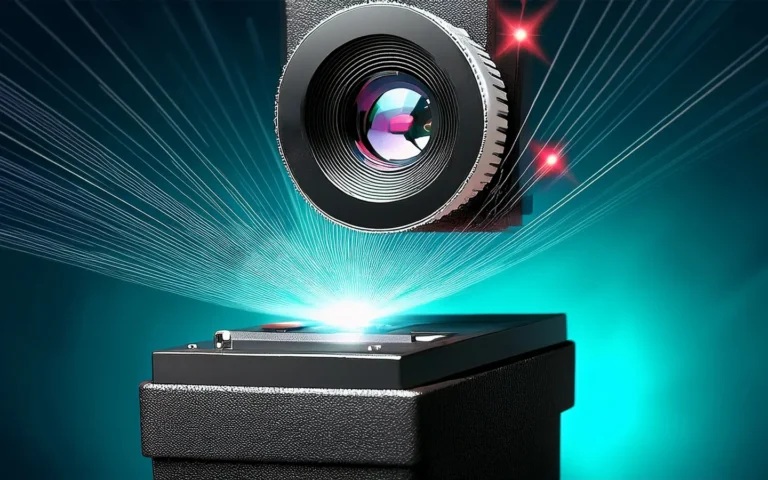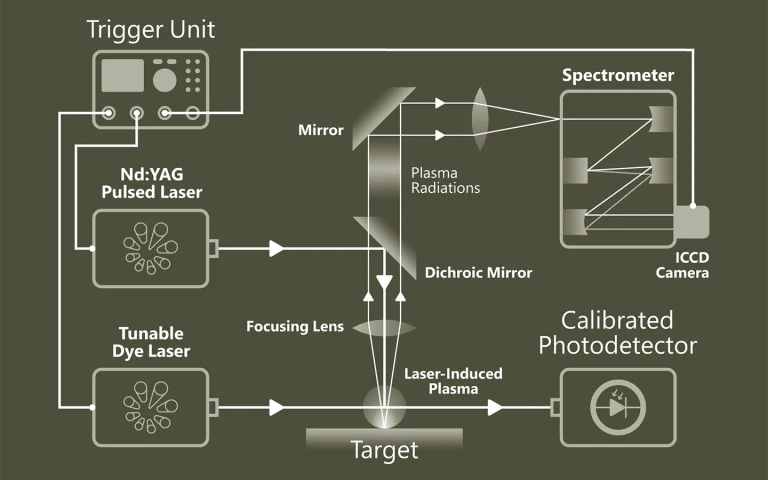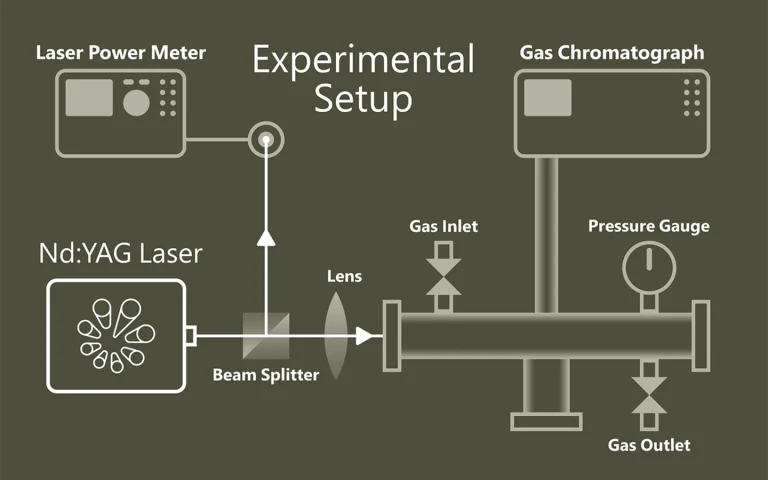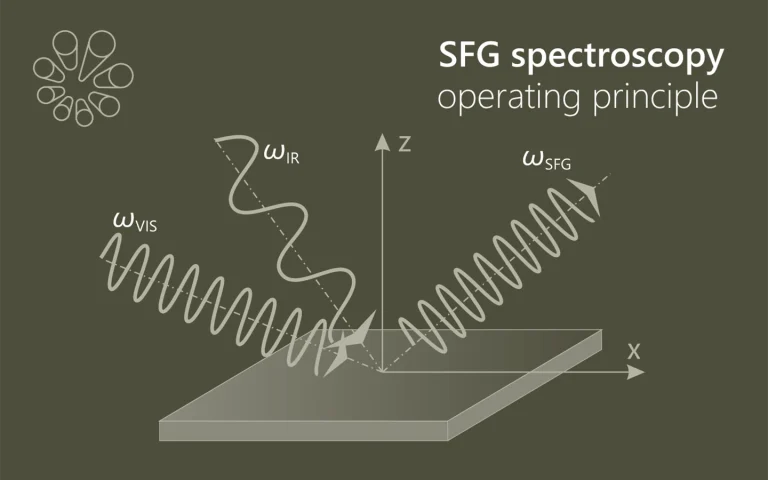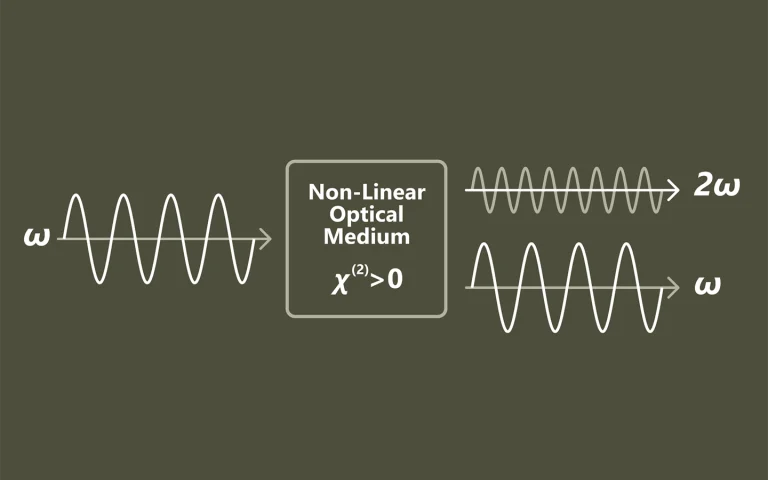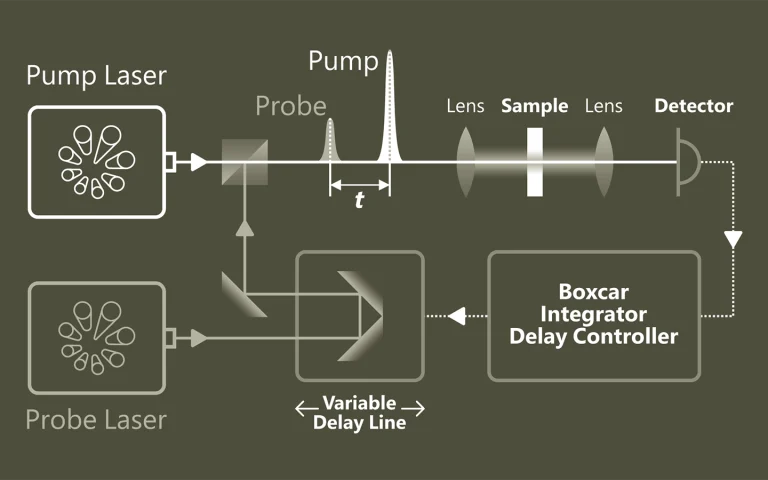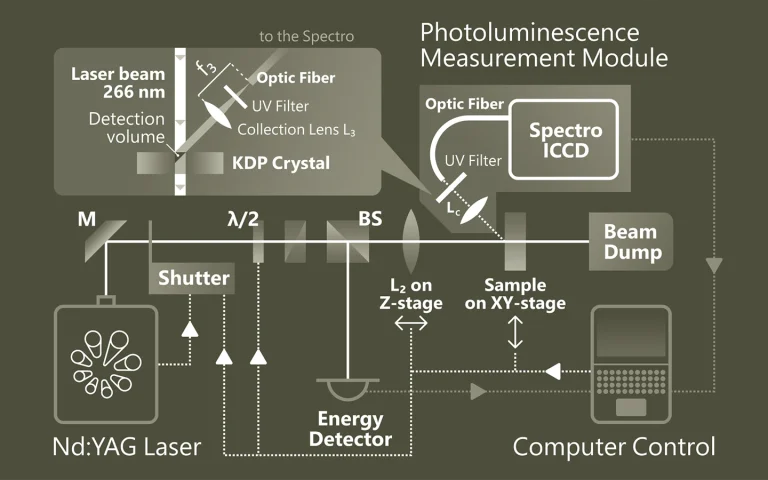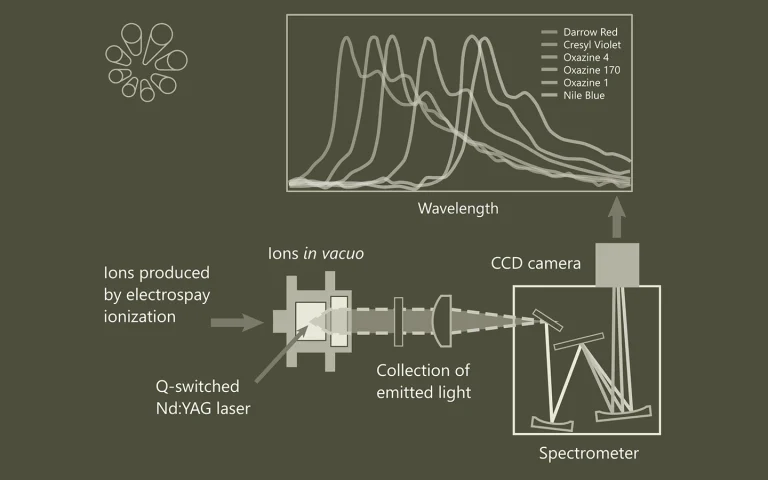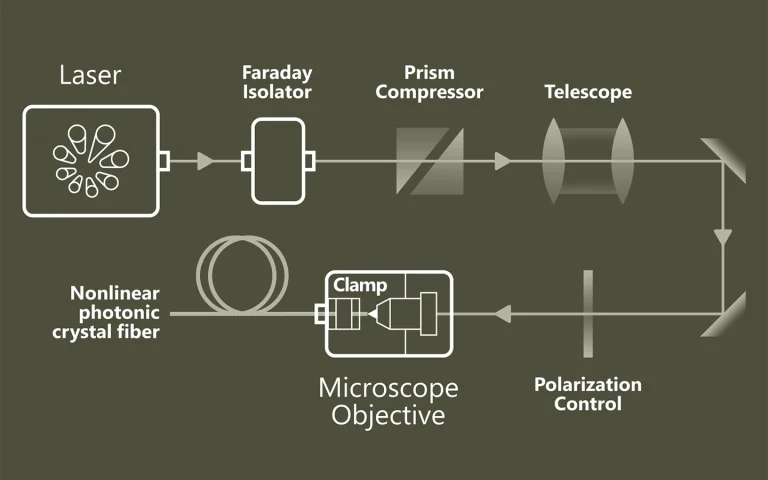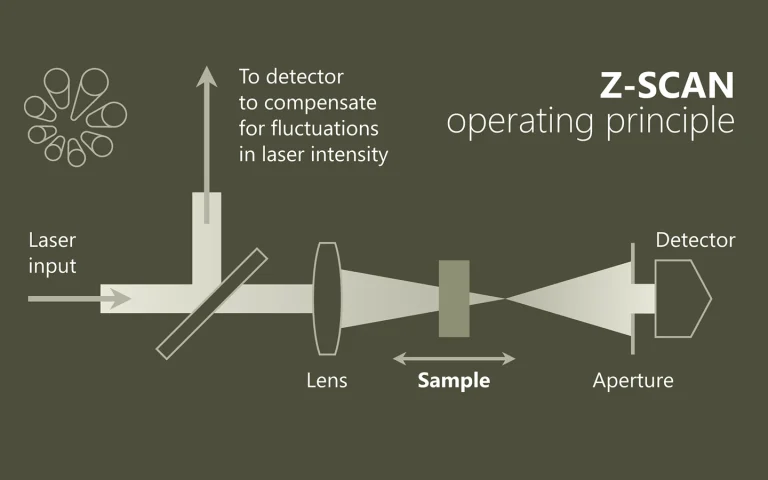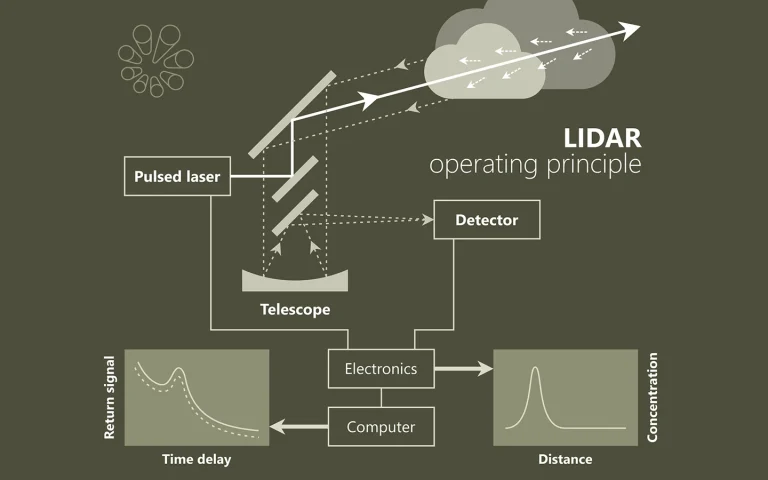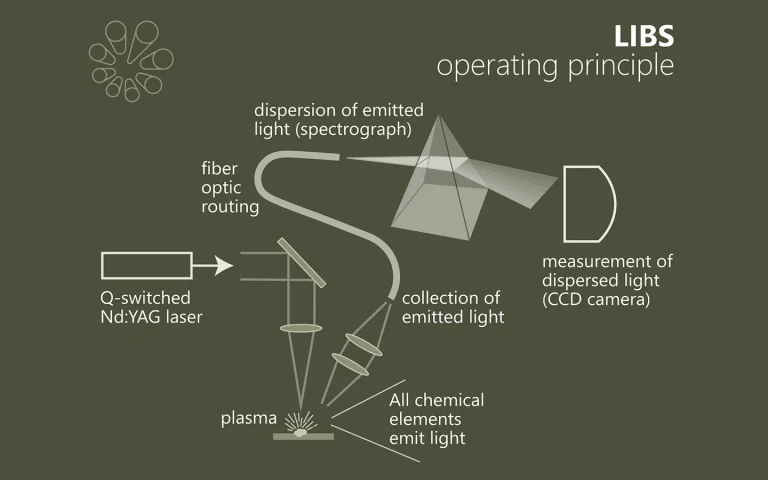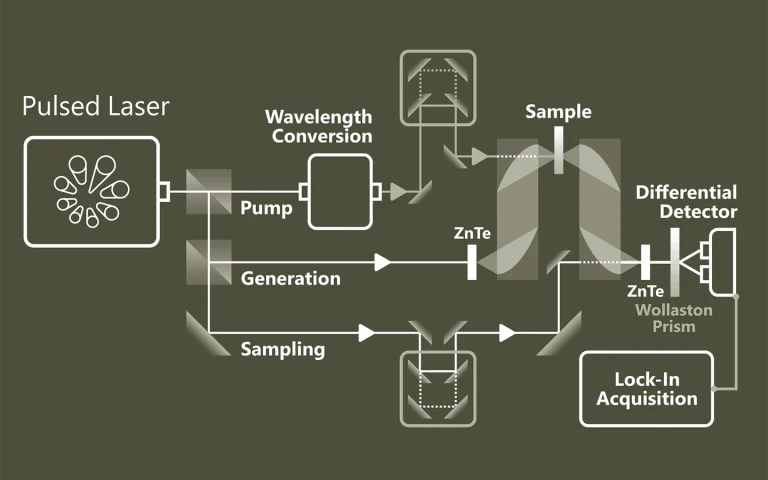Laser spectroscopy
For a long time laser spectroscopy has been source of inspiration for EKSPLA scientific laser engineers. Explore some typical applications where our picosecond and nanosecond lasers has been employed.
Time-resolved photoconductivity
Time-resolved photoconductivity (TRMC) are key techniques used to perform the contactless determination of carrier density, transport, trapping, and recombination parameters in charge transport materials such as organic semiconductors and dyes, inorganic semiconductors, and metal-insulator composites, which find use in conductive inks, thin-film transistors, light-emitting diodes, photocatalysts, and photovoltaics.
The behavior of photoconductivity with photon energy, light intensity and temperature, and its time evolution and frequency dependence, can reveal a great deal about carrier generation, transport and recombination processes. Many of these processes now have a sound theoretical basis and so it is possible, with due caution, to use photoconductivity as a diagnostic tool in the study of new electronic materials and devices.
The importance of relativistic effects on two-photon absorption spectra in metal halide perovskites
Despite intense research into the optoelectronic properties of metal halide perovskites (MHPs), sub-bandgap absorption in MHPs remains largely unexplored. Here we recorded two-photon absorption spectra of MHPs using the time-resolved microwave conductivity technique. A two-step upward trend is observed in the two-photon absorption spectrum for methylammonium lead iodide, and some analogues, which implies that the commonly used scaling law is not applicable to MHPs. This aspect is further confirmed by temperature-dependent conductivity measurements. Using an empirical multiband tight binding model, spectra for methylammonium lead iodide were calculated by integration over the entire Brillouin zone, showing compelling similarity with experimental results. We conclude that the second upward trend in the two-photon absorption spectrum originates from additional optical transitions to the heavy and light electron bands formed by the strong spin-orbit coupling. Hence, valuable insight can be obtained in the opto-electronic properties of MHPs by sub-bandgap spectroscopy, complemented by modelling.
Charge carrier transport in polycrystalline CH3NH3PbI3 perovskite thin films in a lateral direction characterized by time-of-flight photoconductivity
We used time-of-flight photocurrent measurements to determine the role of grain boundaries in charge carrier transport in thin layers of methyl ammonium lead iodide (CH3NH3PbI3). The measurement results were compared to Kinetic Monte Carlo simulations, based on a transport model, which disentangles the transport within crystallites and hopping across grain boundaries. The observed mobilities of electrons are in the order ∼2.5 × 10−1 cm2V−1s−1. The hopping across grains is modeled with an Arrhenius-type probability rate, characterized by activation energy (Ea). It was found that the Ea estimated from the slope of a mobility-temperature dependence is in the range of ∼56 – 70 meV. The factors contributing to Ea are shunting pathways and the grain-size variations including energy level misalignments at the grain boundaries. These results represent a step toward a design of novel windowless organic-inorganic perovskite solar cells.
Flexible non-volatile optical memory thin-film transistor device with over 256 distinct levels based on an organic bicomponent blend
Organic nanomaterials are attracting a great deal of interest for use in flexible electronic applications such as logic circuits, displays and solar cells. These technologies have already demonstrated good performances, but flexible organic memories are yet to deliver on all their promise in terms of volatility, operational voltage, write/erase speed, as well as the number of distinct attainable levels. Here, we report a multilevel non-volatile flexible optical memory thin-film transistor based on a blend of a reference polymer semiconductor, namely poly(3-hexylthiophene), and a photochromic diarylethene, switched with ultraviolet and green light irradiation. A three-terminal device featuring over 256 (8 bit storage) distinct current levels was fabricated, the memory states of which could be switched with 3 ns laser pulses. We also report robustness over 70 write–erase cycles and non-volatility exceeding 500 days. The device was implemented on a flexible polyethylene terephthalate substrate, validating the concept for integration into wearable electronics and smart nanodevices.
Investigation into the advantages of pure perovskite film without PbI₂ for high performance solar cell
In CH3NH3PbI3-based high efficiency perovskite solar cells (PSCs), tiny amount of PbI2 impurity was often found with the perovskite crystal. However, for two-step solution process-based perovskite films, most of findings have been based on the films having different morphologies between with and without PbI2. This was mainly due to the inferior morphology of pure perovskite film without PbI2, inevitably produced when the remaining PbI2 forced to be converted to perovskite, so advantages of pure perovskite photoactive layer without PbI2 impurity have been overlooked. In this work, we designed a printing-based two-step process, which could not only generate pure perovskite crystal without PbI2, but also provide uniform and full surface coverage perovskite film, of which nanoscale morphology was comparable to that prepared by conventional two-step solution process having residual PbI2. Our results showed that, in two-step solution process-based PSC, pure perovskite had better photon absorption and longer carrier lifetime, leading to superior photocurrent generation with higher power conversion efficiency. Furthermore, this process was further applicable to prepare mixed phase pure perovskite crystal without PbI2 impurity, and we showed that the additional merits such as extended absorption to longer wavelength, increased carrier lifetime and reduced carrier recombination could be secured.
Competition between recombination and extraction of free charges determines the fill factor of organic solar cells
Among the parameters that characterize a solar cell and define its power-conversion efficiency, the fill factor is the least well understood, making targeted improvements difficult. Here we quantify the competition between charge extraction and recombination by using a single parameter θ, and we demonstrate that this parameter is directly related to the fill factor of many different bulk-heterojunction solar cells. Our finding is supported by experimental measurements on 15 different donor:acceptor combinations, as well as by drift-diffusion simulations of organic solar cells in which charge-carrier mobilities, recombination rate, light intensity, energy levels and active-layer thickness are all varied over wide ranges to reproduce typical experimental conditions. The results unify the fill factors of several very different donor:acceptor combinations and give insight into why fill factors change so much with thickness, light intensity and materials properties. To achieve fill factors larger than 0.8 requires further improvements in charge transport while reducing recombination.
Transparent Organic Photodetector using a Near-Infrared Absorbing Cyanine Dye
Organic photodetectors are interesting for low cost, large area optical sensing applications. Combining organic semiconductors with discrete absorption bands outside the visible wavelength range with transparent and conductive electrodes allows for the fabrication of visibly transparent photodetectors. Visibly transparent photodetectors can have far reaching impact in a number of areas including smart displays, window-integrated electronic circuits and sensors. Here, we demonstrate a near-infrared sensitive, visibly transparent organic photodetector with a very high average visible transmittance of 68.9%. The transmitted light of the photodetector under solar irradiation exhibits excellent transparency colour perception and rendering capabilities. At a wavelength of 850 nm and at −1 V bias, the photoconversion efficiency is 17% and the specific detectivity is 1012 Jones. Large area photodetectors with an area of 1.6 cm2 are demonstrated.
Efficient charge generation by relaxed charge-transfer states at organic interfaces
Interfaces between organic electron-donating (D) and electron-accepting (A) materials have the ability to generate charge carriers on illumination. Efficient organic solar cells require a high yield for this process, combined with a minimum of energy losses. Here, we investigate the role of the lowest energy emissive interfacial charge-transfer state (CT1) in the charge generation process. We measure the quantum yield and the electric field dependence of charge generation on excitation of the charge-transfer (CT) state manifold via weakly allowed, low-energy optical transitions. For a wide range of photovoltaic devices based on polymer:fullerene, small-molecule:C60 and polymer:polymer blends, our study reveals that the internal quantum efficiency (IQE) is essentially independent of whether or not D, A or CT states with an energy higher than that of CT1 are excited. The best materials systems show an IQE higher than 90% without the need for excess electronic or vibrational energy.
A Novel Method for Direct Nondestructive Diagnosis of Caries Affected Tooth Surfaces by Laser Multiphoton Ionization
A new nondestructive analytical method for diagnosis of tooth caries is presented. The method is based on the Multiphoton Ionization (MPI) fast conductivity signals measured from tooth surfaces. The signals are acquired for a series of laser wavelengths, thus obtaining full MPI spectra. The results indicate a good correlation between the MPI results and the degree of severity of the caries, as diagnosed using traditional inspection. Moreover, the spectral information can be reduced (using least squares fitting) to a single parameter that provides an objective quantitative estimation of the caries severity. The MPI data can be obtained for tiny points on the dental surface and it is suggested that mapping is possible by scanning method.

